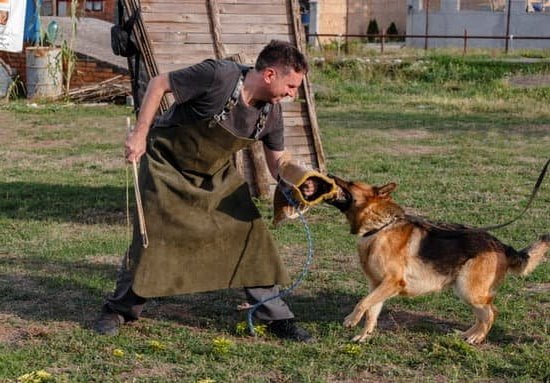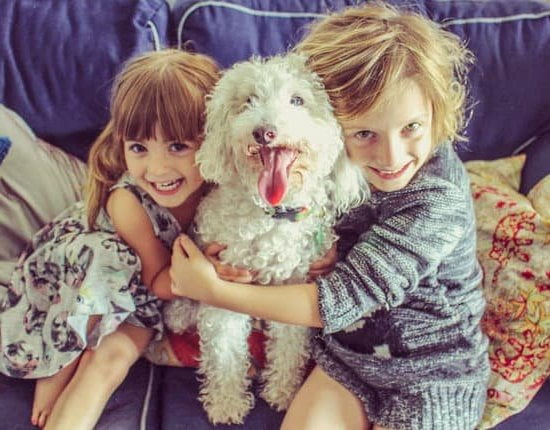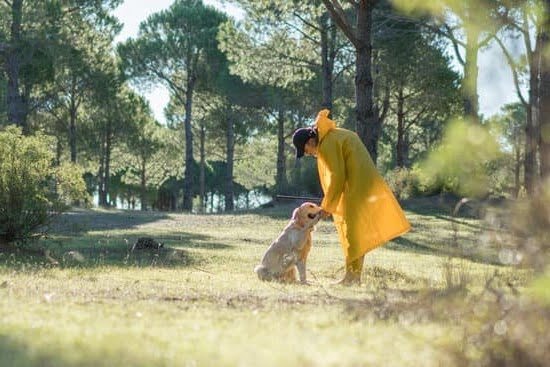Training an outside dog comes with its own set of challenges and requirements. Understanding the needs of an outside dog is crucial in ensuring that training sessions are effective and successful. In this article, we will explore the various aspects of training your outside dog, from setting up a proper outdoor space for training to incorporating exercise and play into outdoor training sessions.
When it comes to understanding the needs of an outside dog, there are several factors to consider. From providing a comfortable and safe outdoor space to addressing behavioral issues specific to outdoor environments, it’s important to tailor your training approach to meet the unique needs of your outside dog. This article will provide insight into how to effectively train your outside dog by taking into account their specific requirements and tendencies.
Whether you’re dealing with a new puppy or a rescue dog, training an outside dog requires careful planning and consideration. By establishing boundaries and rules for outdoor training, using positive reinforcement techniques, and addressing distractions and temptations, you can help your outside dog become well-behaved and obedient in any environment.
Setting Up a Proper Outdoor Space for Training
When it comes to training your outside dog, one of the most important factors to consider is the outdoor space in which you will be conducting the training sessions. A proper outdoor space can make a significant difference in the effectiveness of your training efforts.
First and foremost, ensure that the designated outdoor space is secure and safe for your dog. This means checking for any potential escape routes or hazards such as sharp objects, toxic plants, or other animals that may pose a threat. Additionally, make sure that the area is fenced off or otherwise enclosed to prevent your dog from wandering off during training sessions.
Another crucial aspect of setting up a proper outdoor space for training is to minimize distractions as much as possible. Choose a location that is relatively quiet and free from too much foot traffic or noise that could divert your dog’s attention away from the training exercises. This will help create an environment where your dog can focus and learn more effectively.
Lastly, consider the weather conditions when choosing an outdoor training space. Extreme heat or cold can be uncomfortable and even dangerous for your dog, so it’s important to select a location that offers some shade and protection from the elements. If you live in an area with frequent rain or snow, having a covered area for training can also be beneficial.
| Consideration | Importance |
|---|---|
| Security and Safety | High |
| Minimizing Distractions | High |
| Weather Conditions | Moderate |
By taking these factors into account and creating an ideal outdoor space for training, you can set the stage for successful and productive training sessions with your outside dog.
Establishing Boundaries and Rules for Outdoor Training
When training an outside dog, it is crucial to establish clear boundaries and rules to ensure that the training sessions are effective and successful. By setting up and enforcing these guidelines, both you and your dog will have a better understanding of expectations during outdoor training.
Designating Training Areas
One important aspect of establishing boundaries for outdoor training is to designate specific areas for training sessions. Whether it’s a corner of the yard or a certain spot in a park, having a designated area will help your dog understand when it’s time for training and when it’s time for play.
Consistency in Commands
Consistency is key when establishing boundaries and rules during outdoor training. Use the same commands and gestures each time to communicate with your dog. This consistency will help your dog understand what is expected of them and what behavior is desired during outdoor training sessions.
Setting Clear Expectations
It’s essential to set clear expectations for your outside dog during training. This includes rules regarding behavior, response to commands, and appropriate interaction with distractions. By setting these expectations from the beginning, your dog will have a better understanding of how to behave during outdoor training sessions.
By following these steps, you can effectively establish boundaries and rules for outdoor training with your dog. With consistent reinforcement and clear communication, your outside dog will quickly learn what is expected of them during their training sessions. Remember that patience and persistence are key when teaching an outside dog how to behave in an outdoor environment.
Positive Reinforcement Training Techniques for Outside Dogs
When it comes to training your outside dog, positive reinforcement techniques can be highly effective in encouraging desired behaviors. Positive reinforcement involves rewarding your dog for good behavior with treats, praise, or playtime, which helps to establish a strong connection between the behavior and the reward. This section will explore some key positive reinforcement techniques that can be specifically applied to outdoor training sessions.
One effective technique is clicker training, where a small device called a clicker is used to mark the exact moment when your dog performs the desired behavior. The click sound is followed by a treat, which reinforces the behavior and helps your dog understand what you expect from them. Over time, your outside dog will learn to associate the click with a positive outcome, making it an excellent tool for teaching new commands and tricks.
Another important aspect of positive reinforcement training is consistency. It’s essential to consistently reward your outside dog for displaying the desired behavior, as this reinforces their understanding of what you expect from them. Additionally, using high-value treats during outdoor training sessions can be particularly effective in capturing your dog’s attention and motivation to learn.
Lastly, incorporating play into outdoor training sessions can make the experience enjoyable for both you and your outside dog. Interactive games such as fetch or hide-and-seek can serve as rewards for good behavior while providing mental and physical stimulation. This not only strengthens your bond with your dog but also enhances their overall training experience.
| Positive Reinforcement Techniques | Description |
|---|---|
| Clicker Training | Uses a clicker device to mark desired behavior followed by a treat |
| Consistency | Rewarding good behavior consistently reinforces understanding of expectations |
| Incorporating Play | Using interactive games as rewards enhances bonding and stimulation |
Dealing With Distractions and Outdoor Temptations
When training your outside dog, dealing with distractions and outdoor temptations is a crucial aspect to consider. Outdoor environments can be full of potential distractions for your dog, from wildlife and other animals to enticing smells and sounds. It’s important to address these distractions effectively in order to maintain focus during training sessions.
Recognizing Common Distractions
Before you can address distractions, it’s important to recognize the common things that might tempt or distract your dog while training outside. This could include squirrels, birds, passing cars, or even neighborhood dogs. Understanding what might catch your dog’s attention will help you be better prepared during training sessions.
Implementing Focus Exercises
One effective way to deal with distractions is by implementing focus exercises into your outdoor training routine. These exercises can help teach your dog to pay attention to you despite external stimuli. For example, using treats or toys as a reward for maintaining eye contact with you can help reinforce the importance of staying focused during training.
Gradual Exposure and Desensitization
Another strategy for dealing with distractions and temptations is through gradual exposure and desensitization. Introduce your dog to mild distractions at first and gradually increase the level of stimuli as they become more adept at maintaining focus. This approach can help your dog build up their tolerance to distractions and ultimately improve their ability to listen and follow commands outdoors.
By addressing distractions and outdoor temptations in a systematic way, you can enhance the effectiveness of your outdoor training sessions while also strengthening the bond between you and your dog. Through patience, consistency, and positive reinforcement techniques, you can help your outside dog develop the skills needed to stay focused even in distracting environments.
Advanced Commands and Tricks for Outdoor Training
When it comes to training your outside dog, mastering advanced commands and tricks is a great way to keep them mentally stimulated and engaged. Building on the basic commands they have already learned, advanced training can help strengthen the bond between you and your furry friend while also providing them with a sense of accomplishment. Here are some advanced commands and tricks that you can teach your outside dog:
- Retrieve: Teaching your dog to fetch and retrieve objects is not only fun but also provides mental stimulation and exercise. Start by using their favorite toy and gradually progress to other items.
- Off-leash walking: Once your dog has mastered walking on a leash, you can begin working on off-leash walking in a safe and enclosed outdoor area. This command requires trust, focus, and obedience from your dog.
- Agility training: Creating an agility course in your yard can help improve your dog’s coordination, balance, and confidence. Teach them to navigate obstacles such as tunnels, weave poles, jumps, and ramps.
As you introduce these advanced commands and tricks to your outside dog, remember to use positive reinforcement techniques such as treats, praise, and playtime. Additionally, consistency is key when teaching these complex behaviors. Be patient with your dog as they learn and always end each training session on a positive note.
Furthermore, it’s important to keep safety in mind during advanced outdoor training. Ensure that the environment is free of hazards or potential dangers that could cause harm to your pet. With dedication and practice, both you and your outside dog will enjoy the rewards of mastering these advanced commands and tricks together.
Addressing Behavioral Issues in Outside Dogs
When training your outside dog, it’s important to address any behavioral issues that may arise. Dogs that spend a significant amount of time outdoors may exhibit different behaviors than indoor dogs, and it’s crucial to understand and effectively manage these behaviors for a successful training experience.
Here are some common behavioral issues that outside dogs may display, along with tips on how to address them:
1. Aggression towards other animals or people: If your outside dog displays aggression towards other animals or people, it’s essential to address this behavior immediately. Consider enlisting the help of a professional trainer who can assess the situation and provide guidance on how to modify this behavior through positive reinforcement techniques.
2. Excessive barking: Outdoor dogs may be more prone to excessive barking due to increased stimuli such as wildlife, passing cars, or other dogs in the neighborhood. To address this issue, provide your dog with plenty of mental stimulation, exercise, and interactive toys to keep them occupied. Additionally, using commands like “quiet” and rewarding your dog when they stop barking can help reduce this behavior.
3. Digging and destructive behavior: Many outside dogs engage in digging or destructive behavior out of boredom or excess energy. To combat this issue, create designated digging areas in your outdoor space filled with sand or mulch where your dog is allowed to dig freely. Encourage positive behaviors by providing enrichment activities such as puzzle toys and regular exercise.
By understanding the specific behavioral issues that may arise in outside dogs and implementing appropriate training techniques, you can effectively address and modify these behaviors for a well-behaved outdoor companion. Remember that consistency and patience are key factors in training your outside dog, so be prepared to invest time and effort into shaping their behavior positively.
Incorporating Exercise and Play Into Outdoor Training Sessions
One of the key aspects of training your outside dog is to incorporate exercise and play into your outdoor training sessions. Dogs are naturally active animals, and they require regular physical activity to stay healthy and happy. By combining exercise and play with training, you can make the experience more enjoyable for your dog while also reinforcing their training in a positive way.
When planning your outdoor training sessions, consider including activities such as fetch, tug-of-war, or agility exercises. These activities not only help to burn off excess energy but also provide mental stimulation for your dog. Additionally, incorporating play into your training sessions can strengthen the bond between you and your dog, making them more eager to participate in future training activities.
In addition to play, regular exercise is essential for maintaining a well-behaved outside dog. Long walks, runs, or hikes can help prevent behavioral issues such as excessive barking or digging. It’s important to tailor the amount of exercise to your dog’s breed, age, and overall health. Providing ample opportunities for physical activity will not only improve your dog’s behavior but also contribute to their overall well-being.
By integrating exercise and play into your outdoor training sessions, you can create a fun and effective learning environment for your outside dog. This approach not only promotes good behavior but also enhances the relationship between you and your furry companion. With proper guidance on how to train your outside dog through exercise and play, you’ll be well on your way to having a well-behaved and happy canine companion.
Consistency and Patience
In conclusion, training an outside dog requires dedication and commitment, with consistency and patience being key factors in achieving success. Understanding the needs of an outside dog is essential as it allows you to create a proper outdoor space for training and establish boundaries and rules. Positive reinforcement techniques are effective for outside dogs, and dealing with distractions and outdoor temptations is crucial for their training.
Additionally, advanced commands and tricks can be taught during outdoor training sessions, providing mental stimulation for your dog. Addressing behavioral issues is also important, as it ensures that your outside dog is well-behaved and disciplined outdoors. Incorporating exercise and play into outdoor training sessions not only helps in physical development but also strengthens the bond between you and your dog.
Training your outside dog requires time, consistency, and patience. By following the guidelines provided in this article on how to train your outside dog, you can develop a well-trained canine companion who behaves appropriately outside.
Remember that every dog is different, so find what works best for your pet and continue to reinforce positive behavior through consistent training practices. With determination and understanding of your dog’s needs, you can successfully train your outside dog to be a well-behaved member of the family.

Welcome to the blog! I am a professional dog trainer and have been working with dogs for many years. In this blog, I will be discussing various topics related to dog training, including tips, tricks, and advice. I hope you find this information helpful and informative. Thanks for reading!





